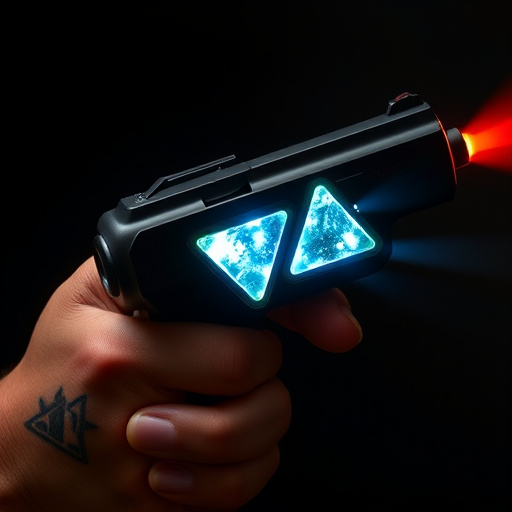Regulatory landscapes regarding concealed carry of triad stun guns vary widely across regions, demanding thorough research into local state or municipality statutes. Permits and licenses may be required, while some areas ban these devices entirely. Understanding legal definitions, specific regulations, and compliance is crucial for responsible ownership, avoiding legal issues, and ensuring safe self-defense practices when carrying a triad stun gun.
“Uncovering the legal landscape surrounding concealed carry stun guns is essential for responsible ownership. This article guides you through a comprehensive journey, starting with a broad understanding of concealed carry laws and their varying state-specific regulations. We delve into the unique features and legal implications of the Triad Stun Gun, a popular choice for self-defense. Additionally, we explore safety protocols and training responsibilities to ensure informed decision-making. By the end, readers will have a clear view of their rights and duties regarding stun guns.”
- Understanding Concealed Carry Laws: A General Overview
- The Triad Stun Gun: Features and Legal Implications
- State-Specific Regulations: Where Does Your Right End?
- Safety, Training, and Responsibilities for Stun Gun Owners
Understanding Concealed Carry Laws: A General Overview
In many regions, the regulations surrounding concealed carry of a stun gun, like the powerful triad stun gun, are evolving and can vary greatly from one location to another. Understanding these laws is crucial for anyone considering carrying self-defense equipment. The first step involves researching state or local statutes that dictate where and how such devices can be possessed and carried.
Some areas may allow concealed carry of stun guns with a permit or specific licensing, while others might restrict them to law enforcement or have outright bans. Knowing these regulations is essential for ensuring compliance and peace of mind. Additionally, understanding the specific legal definitions of a “stun gun” or similar device can be vital, as terminology and what constitutes an acceptable self-defense tool can differ significantly from place to place.
The Triad Stun Gun: Features and Legal Implications
The Triad Stun Gun, a compact and powerful device, has gained popularity among individuals seeking personal protection. Its unique design and features make it a preferred choice for those who want a non-lethal self-defense option that is easy to conceal and use. This stun gun typically delivers a strong electric shock, temporarily incapacitating the target without causing permanent harm.
In terms of legal implications, the Triad Stun Gun operates under similar regulations as other concealed carry weapons. The specific laws vary by region, but generally, users must obtain permits or licenses to legally carry such devices. Some areas have strict restrictions on stun guns, including age requirements, waiting periods, and registration processes. It’s crucial for owners to understand and adhere to these local laws to ensure compliance and avoid legal consequences.
State-Specific Regulations: Where Does Your Right End?
When it comes to concealed carry regulations, understanding state-specific laws is crucial for responsible gun ownership. The rules surrounding stun guns, including triads, vary greatly from one state to another. Some states allow their use for self-defense without a permit, while others require a special license or registration. In many cases, there are restrictions on the power output and size of stun devices, with some states banning certain types entirely.
For instance, some states have specific regulations regarding where a stun gun can be carried. This includes rules about whether it can be concealed or must be openly worn. Additionally, there might be limitations on access to triads, with certain models restricted for use only by law enforcement or military personnel. Knowing these details is essential for ensuring compliance and exercising your right to self-defense safely and legally.
Safety, Training, and Responsibilities for Stun Gun Owners
When it comes to owning a stun gun, such as the popular Triad stun gun, safety should always be the top priority. It’s crucial that users understand the device’s functionality and limitations, ensuring they can operate it responsibly without causing unnecessary harm or endangering others. Comprehensive training is essential; owners must learn proper handling techniques, safe storage practices, and de-escalation strategies to use their stun guns effectively while minimizing risks.
Responsibilities extend beyond personal safety. Stun gun owners have a duty to be familiar with local laws and regulations regarding concealed carry, including any restrictions on stun gun use and the consequences of misuse. Regular maintenance and inspections of the device are also vital to guarantee its reliability. Owners must remain vigilant, using their stun guns only as a last resort when facing an imminent threat, and always considering alternative options for self-defense.
When considering the possession of a triad stun gun, it’s crucial to understand the intricate web of concealed carry regulations that vary from state to state. While these devices offer personal safety as an effective deterrent, owners must navigate legal implications and assume full responsibility. Safety training is paramount to responsible ownership, ensuring both effectiveness and adherence to local laws. Stay informed, stay safe: know your rights and obligations before carrying any stun device, especially a triad stun gun.
